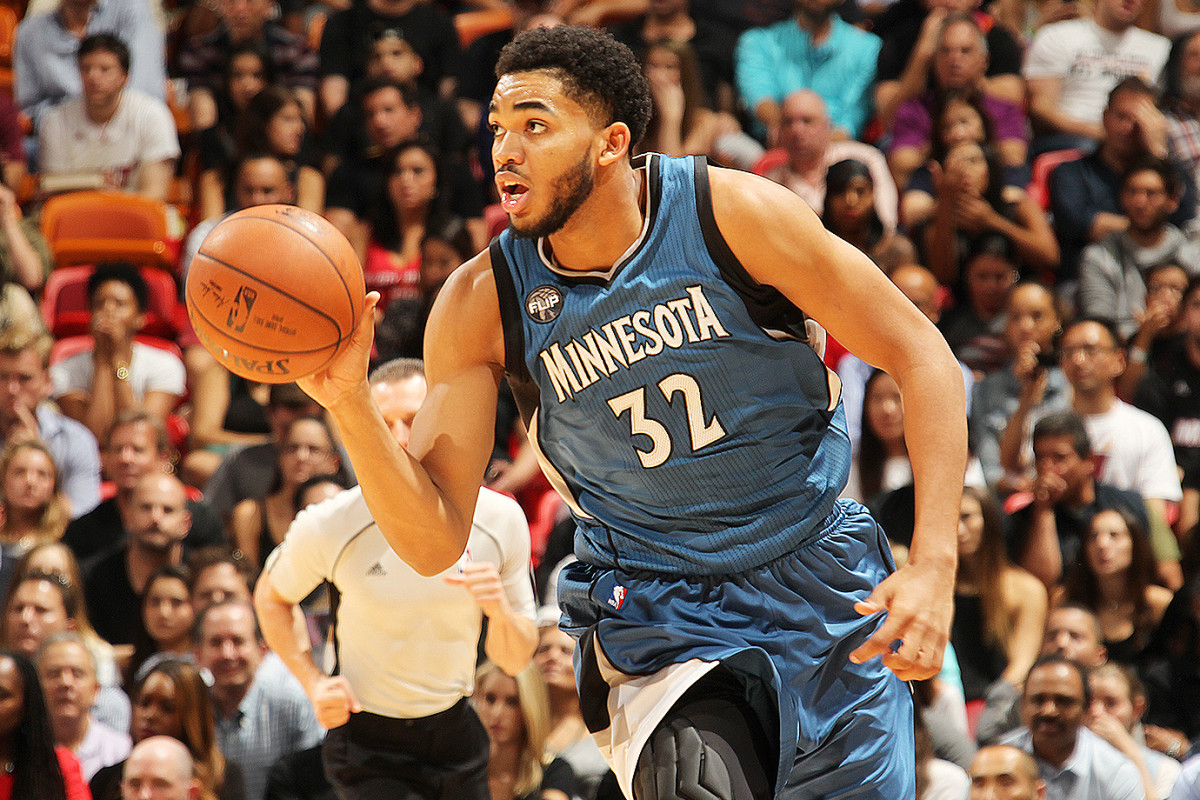By the numbers: How Kentucky's one-and-dones have fared in NBA

John Calipari doesn’t dodge his reputation for producing “one-and-done” college players. In fact, he embraces it. In 2010, when Calipari’s Kentucky team had five players (four of them freshmen) selected in the first round of the NBA Draft, the coach declared it “the biggest day in the history of Kentucky’s program.”
This spring, as the Wildcats’ latest crop of young prospects paraded through the NCAA Tournament, debate over Calipari’s tactics reemerged, spurred in part by Wisconsin coach Bo Ryan’s allusion to “rent-a-players” (which actually seemed to mean fifth-year transfers more than one-and-done freshmen). After the season, the Wildcats watched seven underclassmen, including three freshmen, declare for the draft.
• MORE NBA: Andrew Wiggins's potential | Matt Barnes doesn't hold back
The three Kentucky one-and-dones—Karl-Anthony Towns, Trey Lyles and Devin Booker—join a long line of Calipari recruits turned pro after a single season in Lexington. From 2010 (the first draft after Calipari took over the Wildcats) to 2014, 12 of 42 Division I players to head to the pros after their freshmen years have hailed from Kentucky.
[daily_cut.NBA]Some view the quantity of Kentucky one-and-dones as evidence Calipari shoves players out of the program before they’re ready to leave, callously replacing one generation with the next. But evidence doesn’t support that claim.
SI.com’s Big Board lists Towns as the draft’s second-best prospect, Booker the 14th best and Lyles No. 17. If Towns, Booker and Lyles are selected in the first round, as expected, they will continue an impressive streak: every Calipari one-and-done has been grabbed in the first 30 picks.
Even more noteworthy has been the success rate of Kentucky freshmen-turned-pros. SI.com analyzed three metrics (player efficiency rating, win shares and value over replacement player, via Basketball-Reference) to compare Wildcats one-and-dones to other schools’ since 2010.
| Rookie PER | Career PER | Career VORP | VORP per season | Win shares | Win shares/season |
|---|---|---|---|---|---|---|
Kentucky | 12.8 | 14.8 | 3.9 | 1.0 | 10.8 | 3.0 |
Others | 9.4 | 11.7 | 1.0 | 0.2 | 5.9 | 1.6 |
Kentucky’s crew outdoes everyone else across the board, and it’s easy to see why. The Wildcats have produced three of the four best players in the sample in Anthony Davis, John Wall and DeMarcus Cousins (Duke alum Kyrie Irving being the fourth). And though that may owe largely to recruiting, it’s to Calipari’s credit that Kentucky has had so few one-and-done players fail in the NBA. Even Kentucky’s worst one-and-dones have been better than duds like Kansas’ Josh Selby, Arizona’s Grant Jarrett, Baylor’s Quincy Miller or Oklahoma’s Tiny Gallon, who left school after only one year but never even reached the NBA.
Based on the success of Kentucky’s one-and-dones, no credible argument can claim Calipari casts away his players indiscriminately or against their best interests. Of course even the Wildcats haven’t been perfect in the NBA. We categorized Kentucky’s 12 Calipari-era one-and-dones based on how well their decisions to enter early have panned out.
No-brainer
Anthony Davis, 2012
Davis was the clear No. 1 overall pick in 2010 and has exceeded all expectations three years into his NBA career. He’s been selected to two All-Star games already, could finish top-five in this season’s MVP voting and two years from now might be the league’s best player. He doesn’t regret a thing.
• MORE NBA: Jenkins on Davis's rapid rise | What makes Davis so good?
John Wall, 2010
Wall took longer to develop than Davis but has nonetheless became an NBA star, averaging a double double this season with 17.5 points and 10 assists. Wall presents a good example of how young players can grow not only in college but in the pros as well.
• MORE NBA: Wall gives back to community | Dawn of Boogie Cousins
DeMarcus Cousins, 2010
Feuds with coaches aside, Cousins, the fifth overall pick in 2010, has emerged as an excellent NBA player. In 2014-15 his point and rebound averages have risen to career highs (24.1 and 12.7), and in February he reached his first All-Star Game. Cousins’ NBA Draft entry after only one college season has proven to be no mistake.

[pagebreak]

Good call
Eric Bledsoe, 2010
Blocked by Wall, Bledsoe did less during his one-year college stay than many other Calipari alums but has been just as good in the NBA. Maybe the 6'1" point guard would have benefited from starring at Kentucky as a sophomore rather than backing up Chris Paul in the NBA, but he won’t complain where he ended up: racking up 17 points, five rebounds and six assists a game for the guard-happy Phoenix Suns.
Michael Kidd-Gilchrist, 2012
Kidd-Gilchrist broke out during the 2012 NCAA Tournament and was the second pick in the 2012 draft. His pro career hasn’t been perfect, but he’s a defensive stopper who has pushed his scoring into double figures this year by improving his jump shot. He looks like a quality NBA starter going forward.
• MORE NBA: Kidd-Gilchrist is finding his voice, shot on Hornets
Nerlens Noel, 2013
Slipping to sixth overall in a weak draft wasn’t part of Noel’s post-college plans, nor was missing what should have been his rookie season with an ACL tear. Noel appears no worse for the wear. He has averaged 9.9 points and 8.1 rebounds for the Sixers this season and just turned 21 on Friday.
Brandon Knight, 2011
Knight has steadily developed into a solid NBA starter (at least until falling off recently in Phoenix). Before being traded to Phoenix at the trade deadline this season, Knight was scoring 17.8 points per game for Milwaukee with career highs in shooting percentage (43.5 percent), assists (5.4), rebounds (4.3) and steals (1.6).
• MORE NBA: Noel's progress something for Sixers to feel good about
Oops
Daniel Orton, 2010
Orton’s decision to leave raised eyebrows from the moment he announced it. After averaging only 3.4 points in 13.2 minutes a game in Lexington, the 6'11" center was selected 29th overall by the Magic, apparently affirming his early-entry decision. But he bounced to three teams in three NBA seasons, “peaking” with 3.0 points per game in 22 appearances for Philadelphia in 2013-14. A stint in the Philippines earlier this season ended when Orton dissed Manny Pacquiao’s basketball ability, and the former first-rounder currently plays for the D-League’s Idaho Stampede.
Marquis Teague, 2012
As the starting point guard on a championship team, a former top-10 high school recruit, and brother of an NBA point guard, expectations were high for Teague when he entered the draft in 2012. Then he slipped to 29th overall, shot only 34.9 percent over two NBA seasons for Chicago and Brooklyn and ended up stuck in the D-League this season. Teague, like Orton, could have used another year or two of college to prepare for the professional game. If one were to argue Calipari pushes his players out too early, this is where he or she would start.
Too early to tell
Archie Goodwin, 2013
Goodwin is tied with Orton and Teague for worst draft position by a Kentucky one-and-done under Calipari. After contributing 14.1 points a game to the worst Kentucky team of the Calipari era, Goodwin entered the NBA as the league’s second youngest player. Though he deserves time to develop, the 20-year-old shooting guard has appeared in only 38 games for the Suns this year, averaging 5.3 points on 39.2 percent shooting.
• MORE NBA: Goodwin holds dunk contest | Goodwin dunks on Valanciunas
James Young, 2014
Young is only a rookie, so it’s far too early to proclaim his early entry a mistake, but the 17th overall pick has played sparingly for the Celtics this season. He has averaged 3.2 points on 34.7 percent shooting over 30 games for the Brad Stevens-led Celtics. Efficient shooting was a problem for Young even in college, where he made only 40.7 percent of his shots. On the other hand, the 6'6" wingman is only 19, meaning he has some time to improve on the grizzly 8.48 PER he’s submitted during his rookie year.
Julius Randle, 2014
Randle suffered some bad luck before his professional career could get going, breaking his leg only 14 minutes into his first game. A star in his sole college season and the seventh overall pick in the 2014 draft, Randle will start fresh with the Lakers next season. Given the success of Calipari’s other top-10 picks, there’s little reason to doubt him.
GALLERY: No. 1 NBA draft picks in the lottery era
The NBA's No. 1 Draft Picks in the Lottery Era
1985: Patrick Ewing
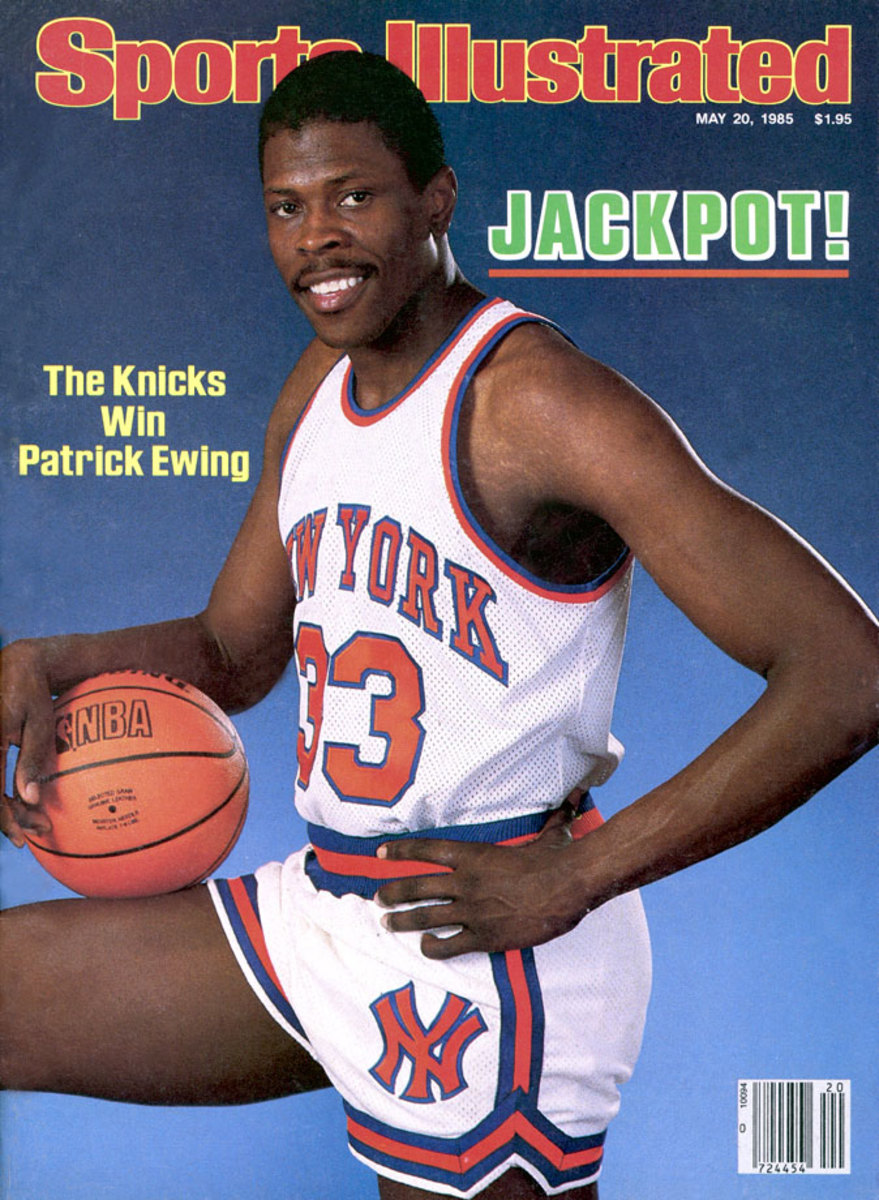
1986: Brad Daugherty
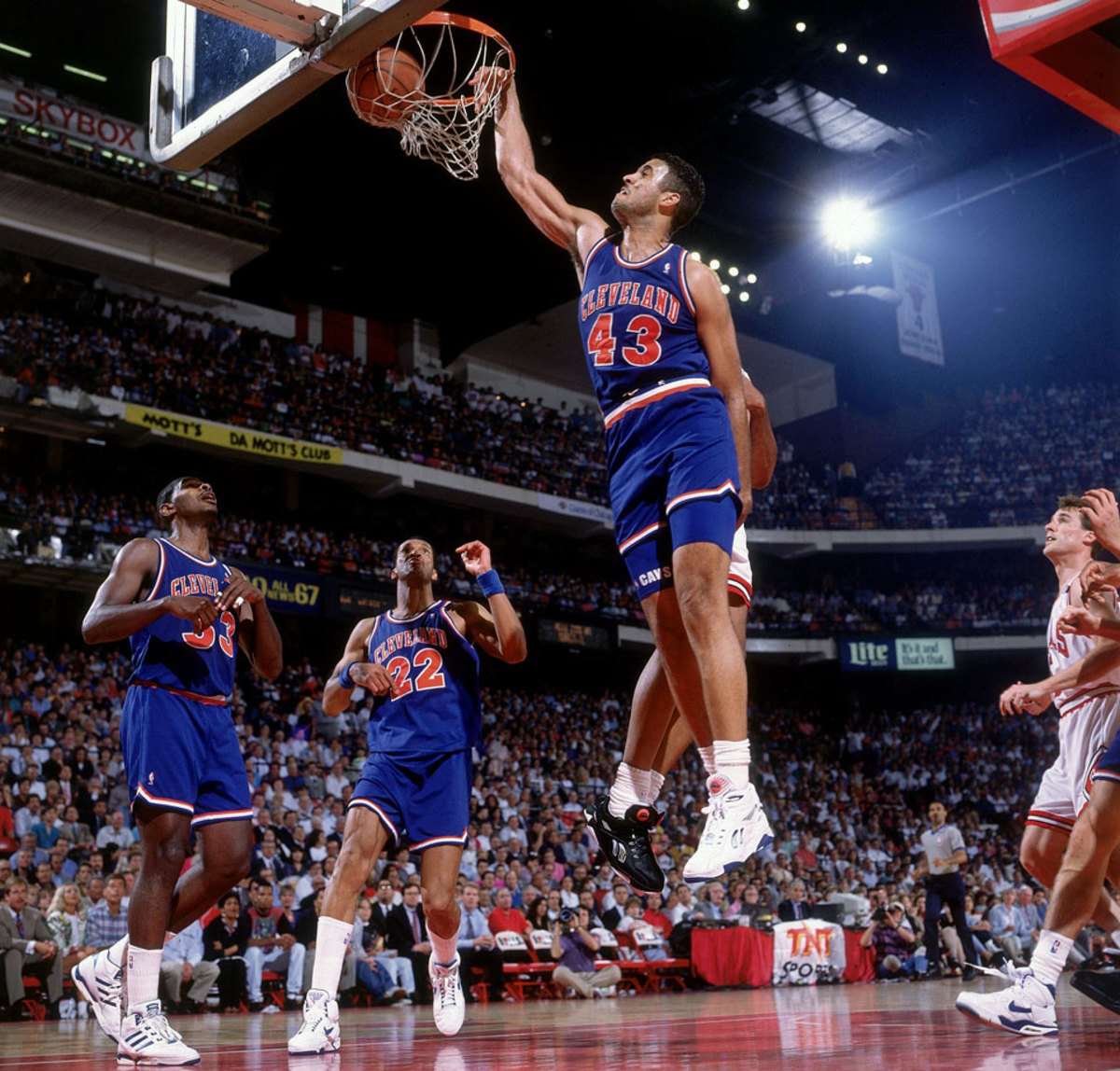
1987: David Robinson

1988: Danny Manning

1989: Pervis Ellison
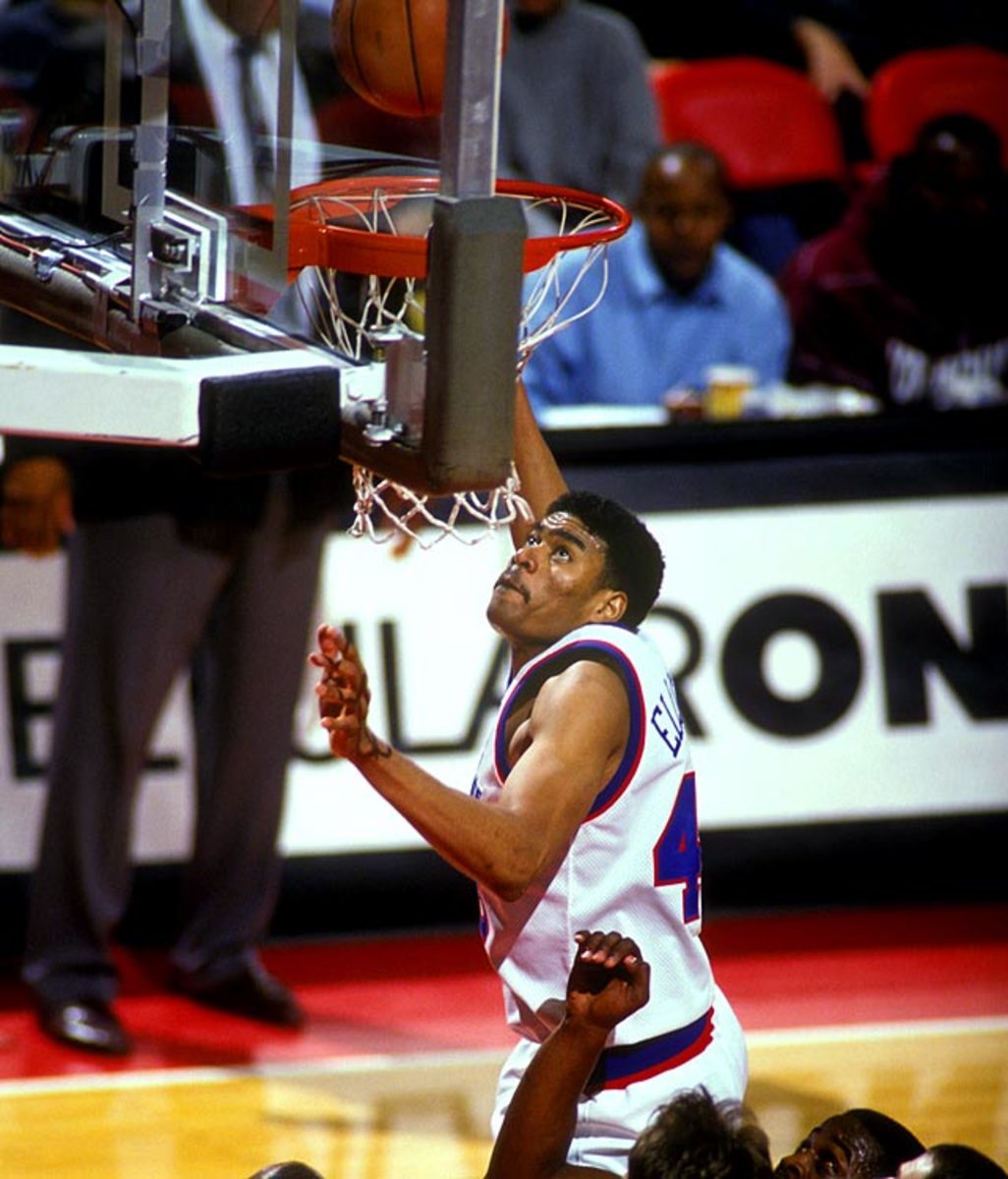
1990: Derrick Coleman
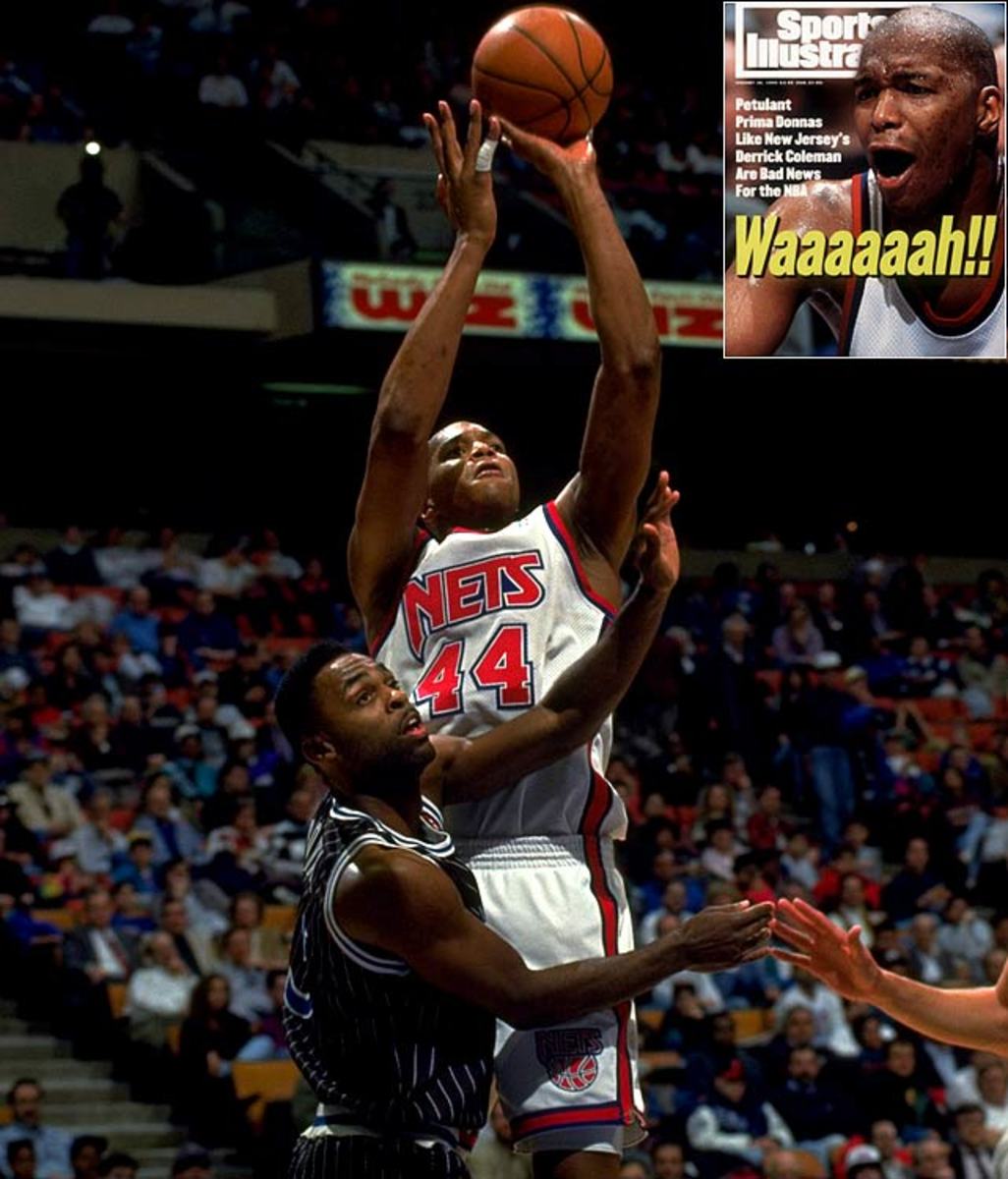
New Jersey Nets
1991: Larry Johnson

1992: Shaquille O'Neal

1993: Chris Webber

Orlando Magic
1994: Glenn Robinson

1995: Joe Smith

1996: Allen Iverson

1997: Tim Duncan

San Antonio Spurs
1998: Michael Olowokandi

Milwaukee Bucks
1999: Elton Brand

2000: Kenyon Martin

New Jersey Nets
2001: Kwame Brown

2002: Yao Ming
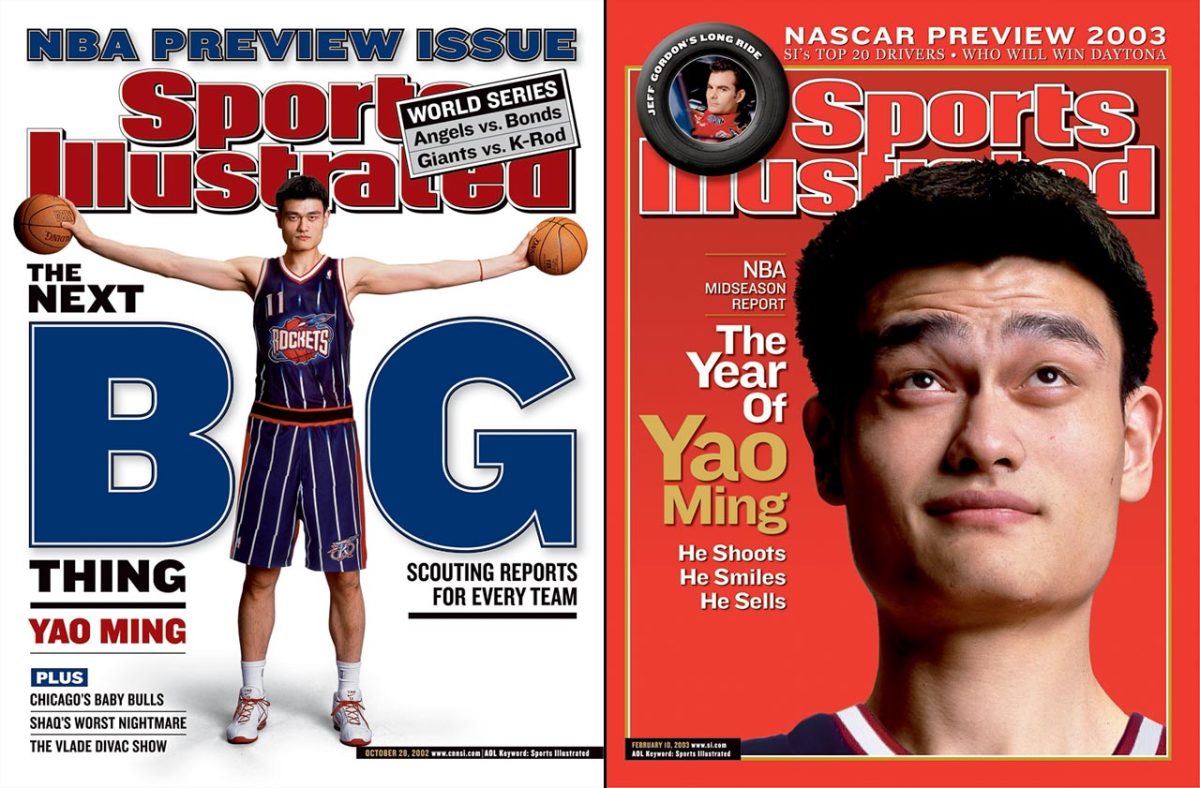
2003: LeBron James

Cleveland Cavaliers
2004: Dwight Howard

Orlando Magic
2005: Andrew Bogut

Milwaukee Bucks
2006: Andrea Bargnani
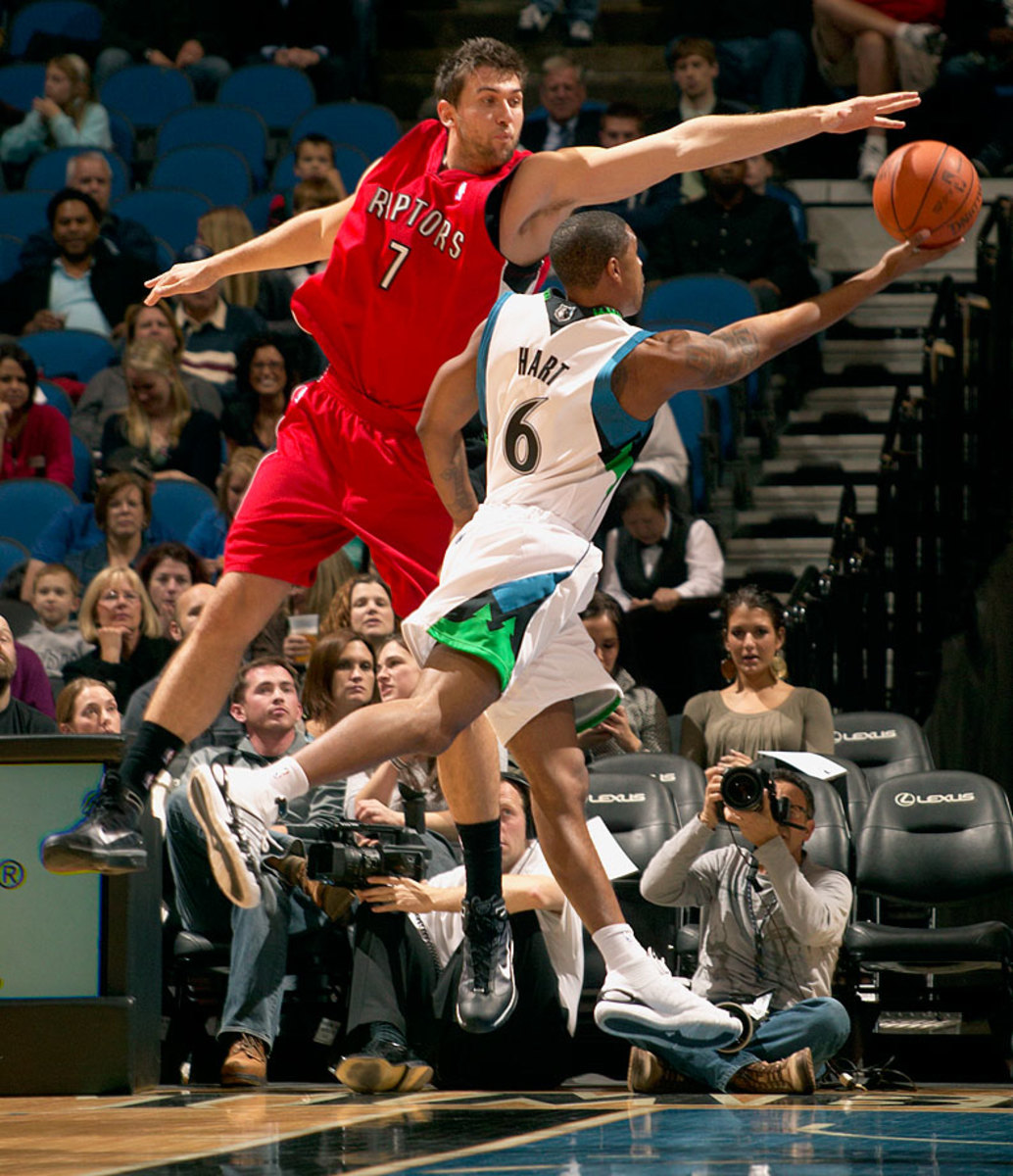
2007: Greg Oden

2008: Derrick Rose
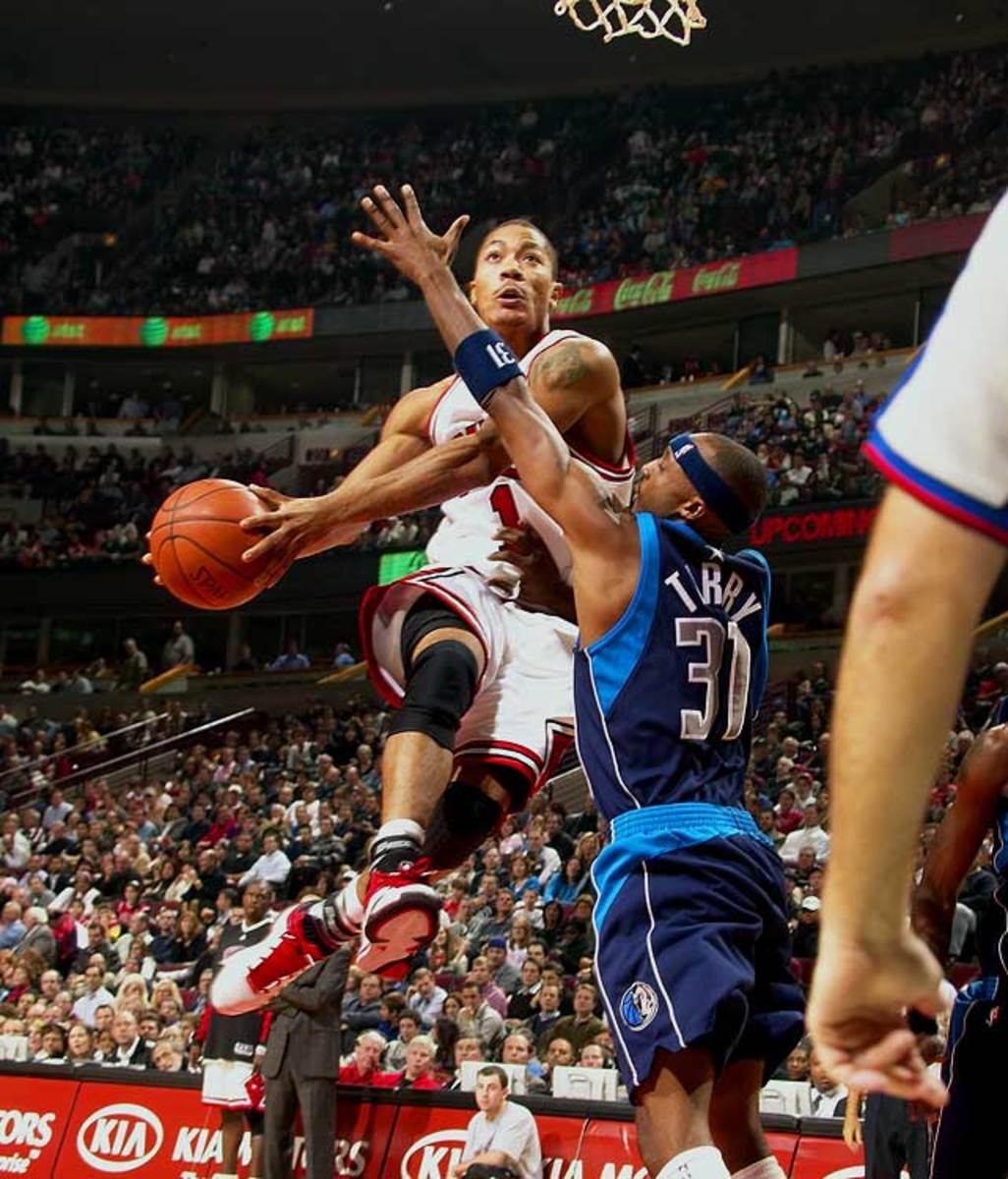
Chicago Bulls
2009: Blake Griffin

Los Angeles Clippers
2010: John Wall

Washington Wizards
2011: Kyrie Irving
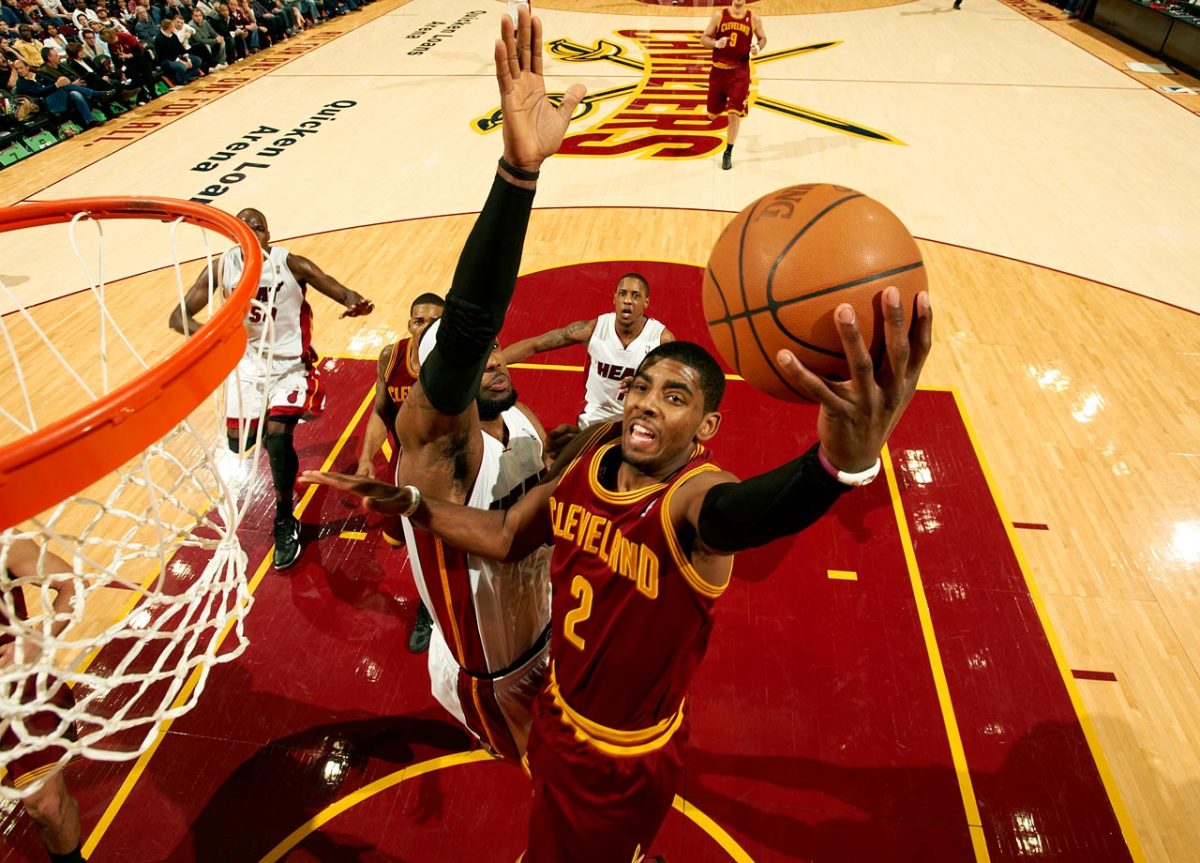
Cleveland Cavaliers
2012: Anthony Davis
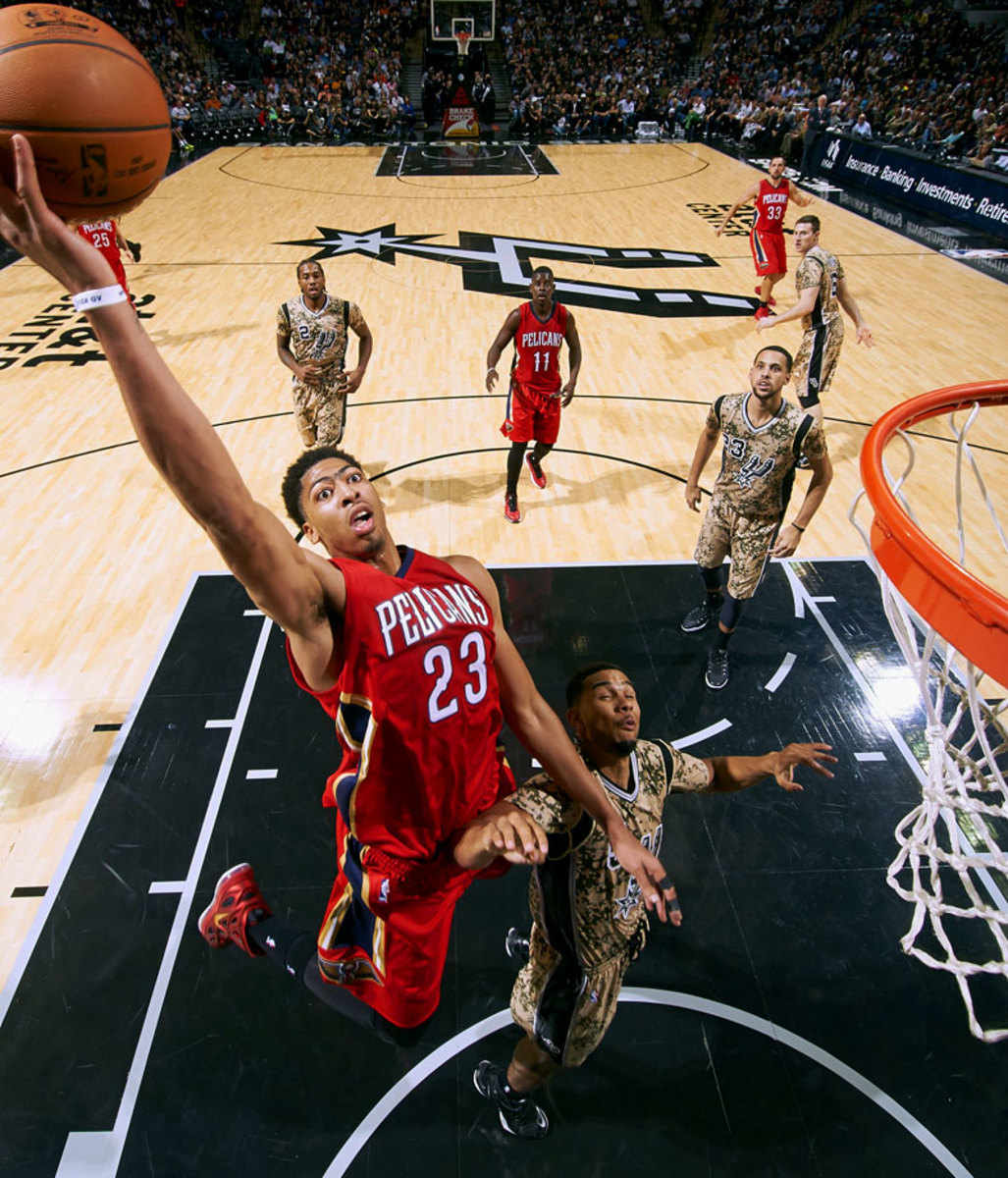
New Orleans Hornets
2013: Anthony Bennett

Cleveland Cavaliers
2014: Andrew Wiggins

Cleveland Cavaliers
2015: Karl-Anthony Towns
